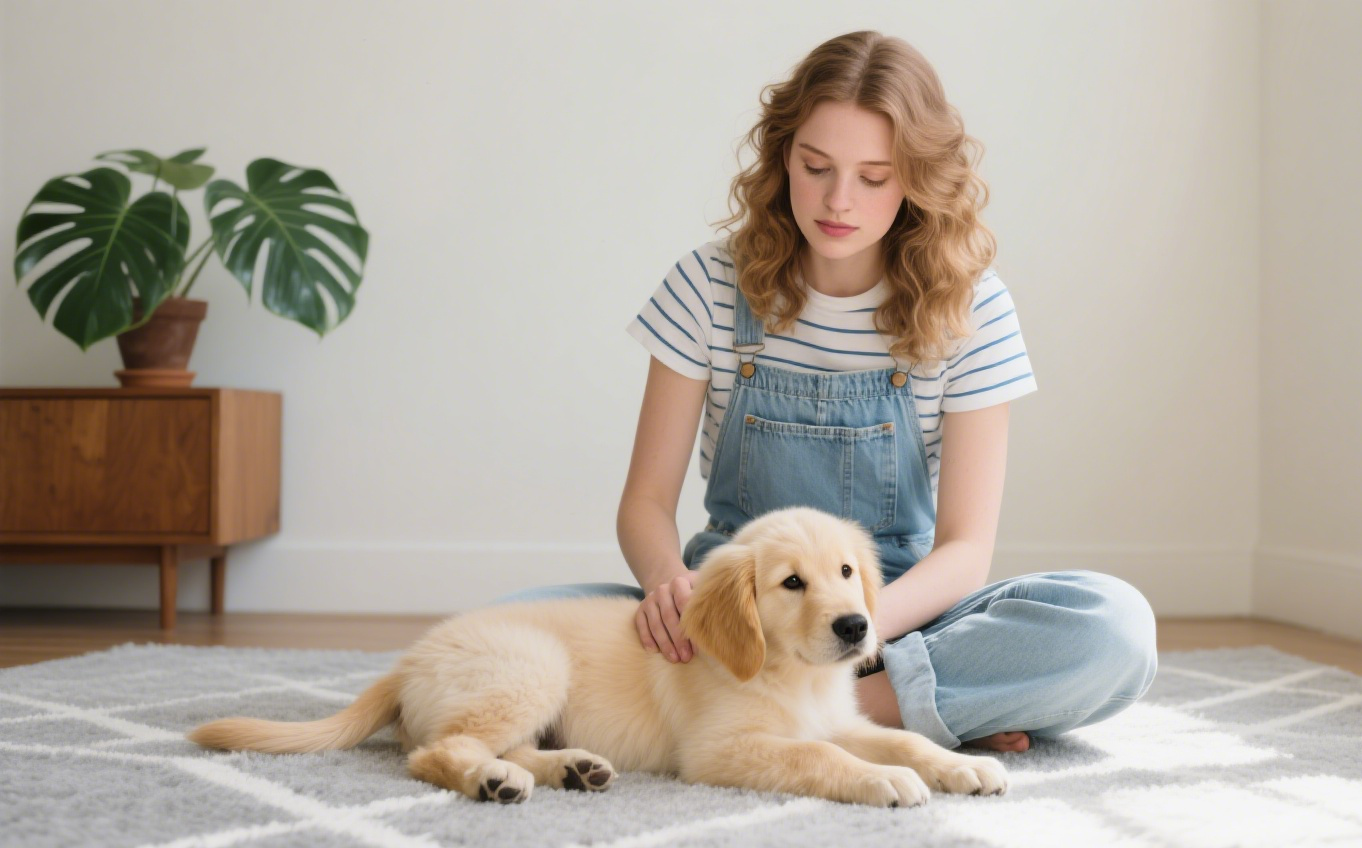When Ethan had the runs out of nowhere, we learned two things fast: hydration matters, and gentle food wins. Instead of chasing five fixes at once, we moved to simple, limited-ingredient meals and tracked changes for a week. Below is the calm, vet-aligned playbook we now follow—plus the exact wet and dry foods that made our lives easier.
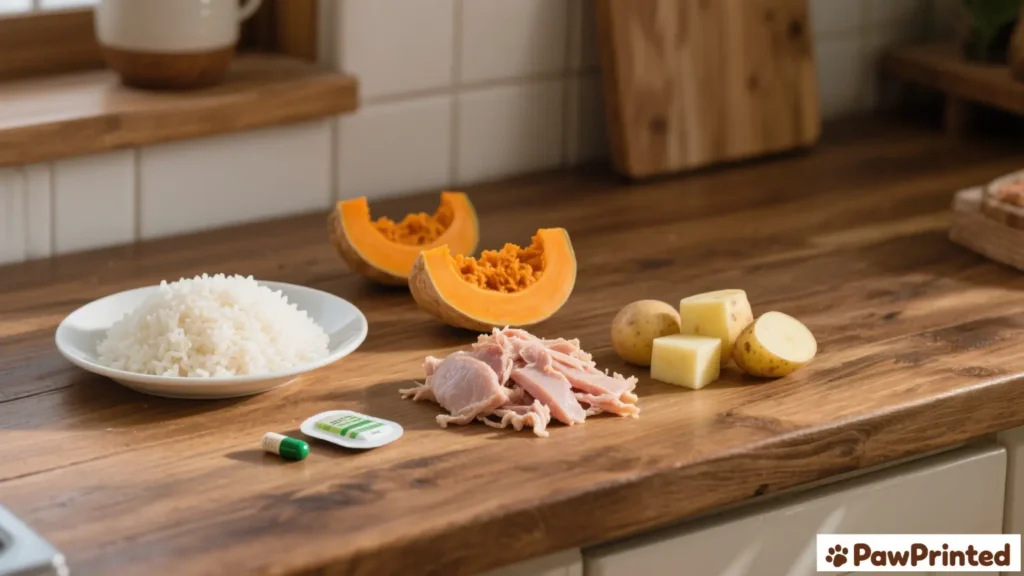
Red flag — see your vet now: black/tarry stool, blood in stool, repeated vomiting, fever, extreme lethargy, dehydration, or diarrhea lasting > 48 hours. Puppies, seniors, and tiny breeds dehydrate quickly—call your vet sooner.
What Worked For Us (Soothing Food Picks)
The night Ethan’s tummy first went off the rails, we promised ourselves to change only one thing at a time. Our vet asked us to start gentle and write everything down. So we opened a can of a simple turkey-and-rice LID, spooned a splash of warm water over it, and watched. That first evening with turkey LID felt like a small exhale—clean label, mild gravy, easy to mash, and his appetite finally nudged back.
Day two wasn’t perfect, so we switched the protein only once for a clearer read: a broth-forward whitefish & potato LID. That can became our “reset” meal—short ingredient list, minimal extras—ideal for when we weren’t sure which variable was stirring things up.
When his appetite dipped on day three, we leaned on palatability. A smooth loaf of salmon & rice went down easily even when he looked uncertain. On busier days when we needed something we could find anywhere, we kept a couple cans of Hill’s Sensitive Wet on hand—steady formula, easy to portion, no surprises.
By the end of the week, stools were firming, so we moved toward a routine we could live with. We transitioned 25% at a time to Hill’s Sensitive Stomach & Skin (dry) as his daily base—consistent, gentle, and simple to measure. On days he needed extra encouragement or we wanted to add probiotics from a different line, we alternated portions with Purina Pro Plan Sensitive (salmon & rice, dry), which paired nicely with our notes-first approach.
Nothing here is magic—just calm, consistent choices. We rotate within this small circle: turkey LID when we want predictability, whitefish & potato LID when we need a reset, salmon & rice or Hill’s Sensitive Wet when appetite wobbles, then settle into Hill’s Sensitive Dry or Purina Pro Plan Sensitive Dry once things stabilize. One change at a time, notes on every bowl—that’s what actually moved the needle for us.
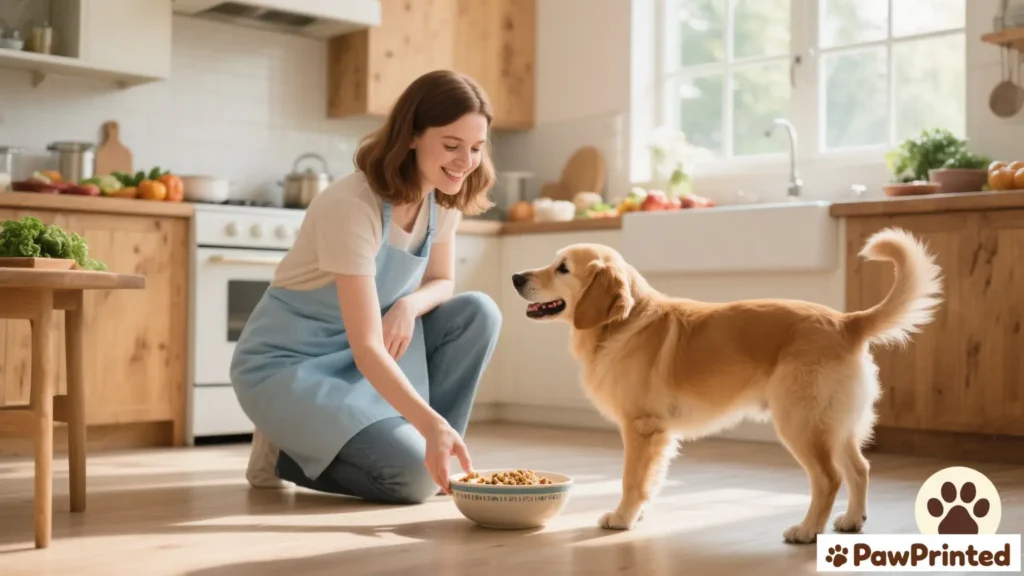
Why Diarrhea Needs Special Care
Diarrhea drains water and electrolytes and irritates the gut lining, so we keep recipes simple, lower fat, and add moisture. Single-protein wet food or a gentle dry base with warm water can reduce friction while you observe stool changes. Avoid rapid protein rotation or flashy gravies—consistency helps you see cause and effect.
Our Simple Routine (3–5 Steps)
1) Short rest + hydration. Offer fresh water; in mild cases, skip one meal to settle the gut (puppies/seniors: ask your vet first).
2) Start gentle wet food. Begin with 25–30% of a simple wet formula (turkey or whitefish). Add a splash of warm water; keep treats boring.
3) Add probiotics. Use a dog-specific product for 7–10 days while keeping the main formula steady.
4) Transition to a steady dry base. Once stools firm, move toward a sensitive-stomach dry food to stabilize routines.
5) Log and adjust. Track stool shape (1–5), energy, appetite, and exact recipes to avoid “mystery swaps.”
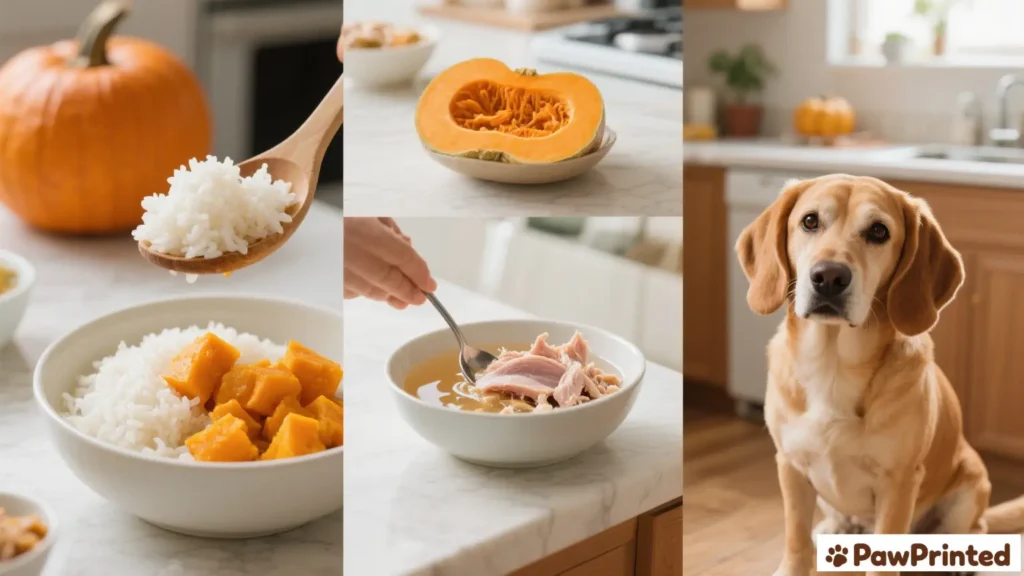
Comparison Table: Gentle Options
| Option | Why It Helps | Best For | Link |
|---|---|---|---|
| Turkey & Rice (LID, wet) | Short label, easy to digest | Initial reset days | go/lid-turkey-wet |
| Salmon & Rice (wet) | Highly palatable, modest fat | Low appetite phases | go/salmon-rice-sensitive-wet |
| Whitefish & Potato (LID, wet) | Minimal extras, broth-based | Elimination-style weeks | go/whitefish-potato-wet |
| Hill’s Sensitive Wet | Balanced and widely available | Daily sensitive plan | go/hills-sensitive-wet |
| Hill’s Sensitive (dry) | Steady base once stools firm | Stabilizing routine | go/hills-sensitive-dry |
| Purina Pro Plan Sensitive (dry) | Salmon-first + probiotics | Sensitive adults | go/purina-proplan-sensitive-dry |
FAQ
Mild diet-related diarrhea often improves within 3–5 days if you move to a simple, limited-ingredient plan and keep variables steady. Track stool, energy, and appetite daily. If diarrhea lasts beyond 48 hours, or you see blood, black/tarry stool, repeated vomiting, or lethargy, call your vet. See our Limited Ingredient Dog Food guide for the exact approach we use.
Plain white rice can help firm stools when paired with a gentle protein like turkey or whitefish. Keep portions modest, and transition to a balanced sensitive-stomach formula as stools normalize so your dog gets complete nutrition. Our go-to reset cans are turkey LID and whitefish & potato.
Start with wet: it adds moisture and is softer on the gut. Once stools improve for 2–3 days, transition toward a steady dry base to lock in routine. We rotate between gentle wet picks and sensitive dry picks, depending on appetite and stool quality.
Many vets support dog-specific probiotics during and after tummy upsets. They can help balance gut flora and improve stool consistency. Use one product at a time for 7–10 days and log results. Learn more in our Dog Probiotics Guide.
Avoid known triggers from your dog’s history, heavy gravies, high-fat blends, and long lists of thickeners. Keep it simple—single protein plus plain carb. Two safe starters are turkey LID and whitefish & potato.
Immediately if you see blood, black/tarry stool, repeated vomiting, fever, severe lethargy, or signs of dehydration. Puppies, seniors, and toy breeds dehydrate quickly and should see a vet sooner. If mild cases don’t improve within 48 hours on a gentle plan, call your vet. Meanwhile, review our LID guide and wet food picks for safe transitions.
If you don’t want to cook daily, check our dry food picks — those were Ethan’s daily backups.
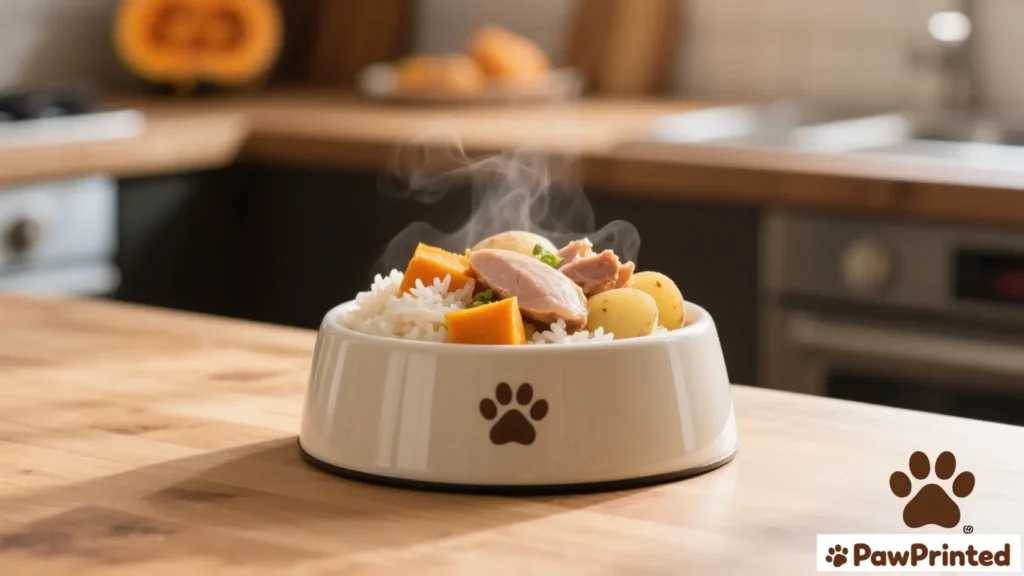
Wrapping It Up
Diarrhea is stressful, but a calm, simple plan works wonders: hydrate, choose gentle wet food, add probiotics, then move to a steady dry base when stools improve. If you’re stuck, start with gentle wet food, then move to steady dry picks. And for any red flags, your vet is your first stop.

